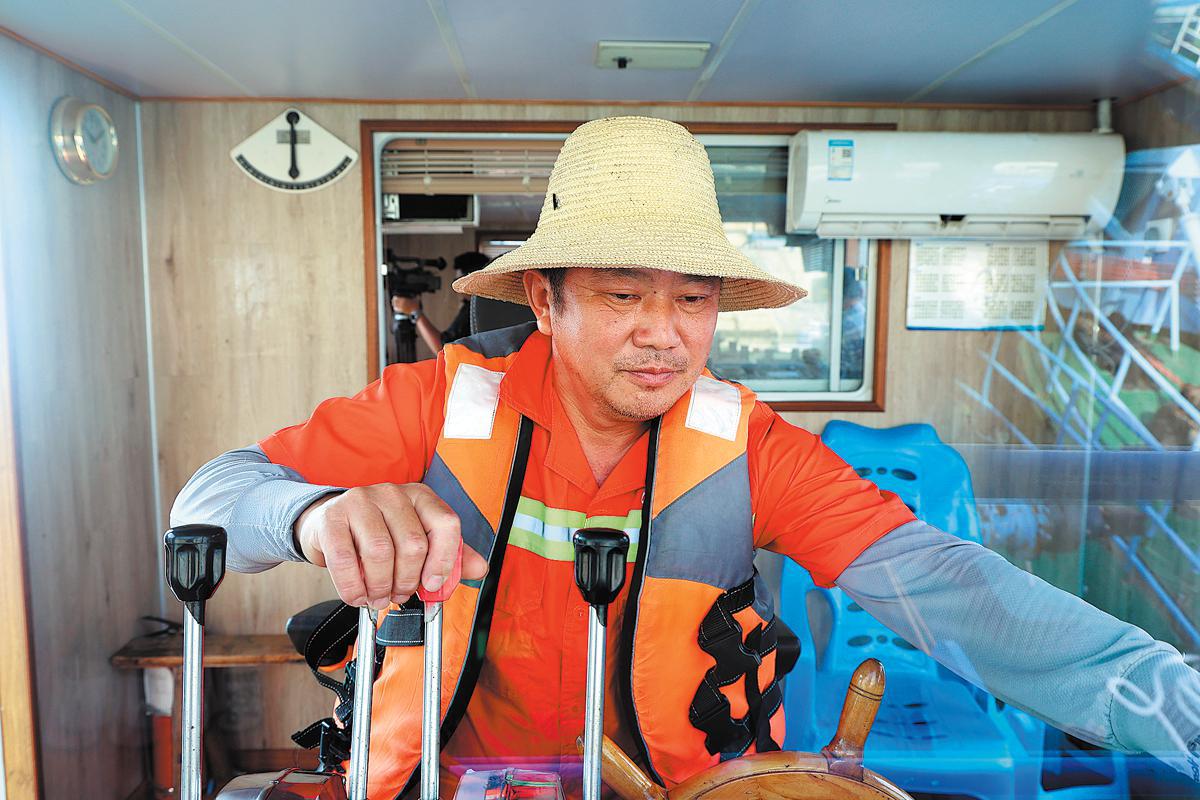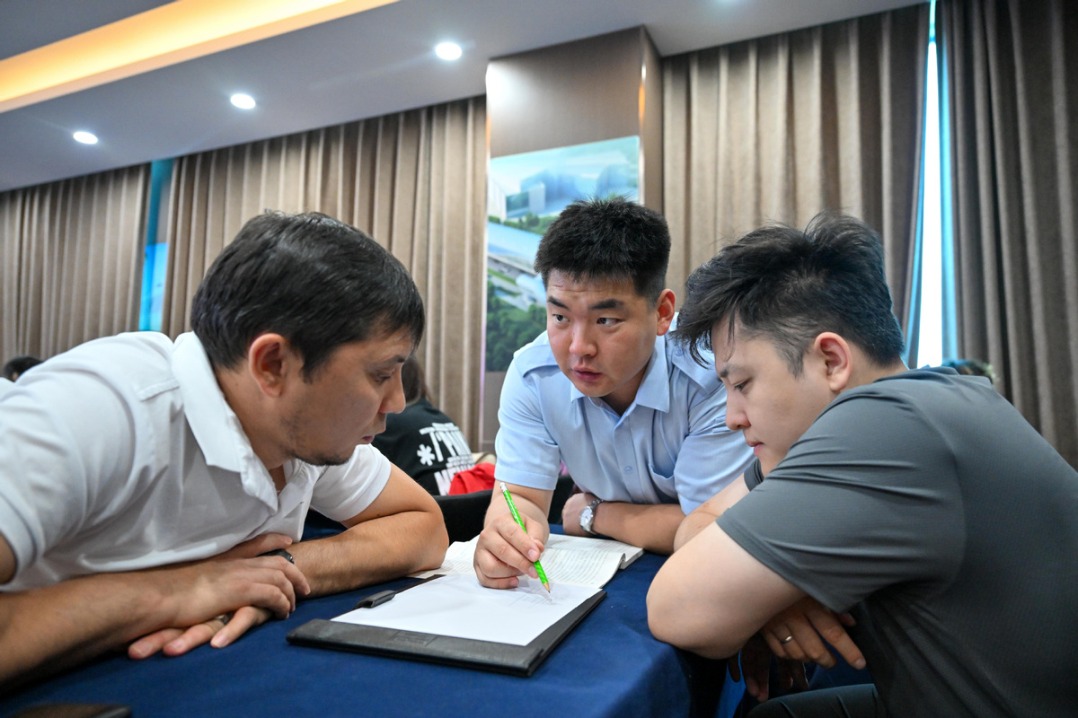River cleaners keep Yangtze waters clear
Workers in Wushan county ply Asia's longest river so all goes smoothly downstream


China categorizes the quality of surface water into five levels. Class I signifies water from source areas or national-level nature reserves that is safe for direct consumption, while the next best, Class II, includes water from centralized domestic supplies in first-grade protection zones or habitats for rare aquatic life, necessitating light purification before drinking.
As the final ecological barrier for the upper reaches of the Yangtze, Wushan bears a great responsibility for the rivers as it makes its way through the Yangtze River Economic Belt, an area of 2.05 million square kilometers, including 11 provinces and municipalities.
"The length of the Yangtze River within Wushan totals 183 km, comprising 55 km of the mainstream and 128 km of tributary rivers," said Yu Zhihua, head of the county's debris clearing team.
"The main floating debris in this area consists of dead branches and leaves. Their accumulation over time can not only affect people's visual perception, but also lead to decay when soaked, emitting odors, compromising water quality, and triggering a series of problems for aquatic creatures," Yu said.
He added that given the significance of the Yangtze River as a crucial waterway, an excess of floating debris can also affect the safety of the navigational channel.
Considering the profound environmental, ecological and transportation-related harm, the county introduced debris clearing operations in 2003. The fleet can remove some 20,000 metric tons of waste every year, at a cost of around 6 million yuan ($836,000), excluding additional expenses such as equipment purchases, Yu said.
Apart from the seven mechanized debris-clearing vessels, there are also semi-mechanized, manually operated debris clearing boats and transfer boats. While the introduction of mechanized boats has significantly enhanced operational efficiency, the manually operated boats are well-suited for clearing operations in tight spaces such as docks, he added.
"Because the floating debris is mainly washed down from the mountains by rainwater, the workload is relatively heavy during the flood season, typically from May to October, requiring sometimes all boats to be dispatched," Yu said.
The coordinated efforts of various regions along the course of the Yangtze River have had a ripple effect, making the cleanup work much easier, and three boats are enough for a sunny day like today, he said.
Wei Wei, an official from the county's ecology and environment bureau, conducts monthly evaluations of water quality with his colleagues.
"The on-site parameters of indicators including pH, dissolved oxygen levels and conductivity sometimes even meet the standards for Class I water quality," Wei said. "However, the most crucial factor affecting the water quality in this area is the phosphorus concentration, an indicator that cannot be measured with portable devices and necessitates further experimental evaluation.
"In 2016, the annual average concentration of phosphorus was 0.103 milligrams per liter. By 2017, it decreased for the first time to 0.092 mg per liter, satisfying the national standard for Class II water quality, which mandates a phosphorus concentration threshold at 0.1 mg per liter," he said.
























